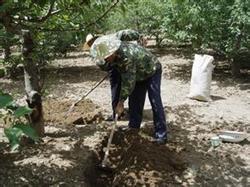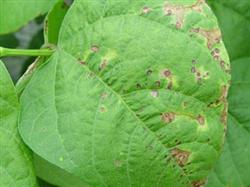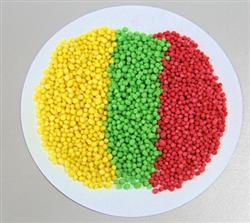Immiscible fertilizers in agricultural production

The rational application of fertilizer is the key to agricultural production. In order to achieve the effective combination of chemical fertilizer and organic fertilizer, it is necessary to understand the knowledge of fertilizer use. According to the acidity and basicity of its aqueous solution, fertilizer can be divided into acidic fertilizer, alkaline fertilizer and neutral fertilizer. Some fertilizers in agricultural production are acidic, such as calcium superphosphate and potassium dihydrogen phosphate, while others are alkaline, such as plant ash and ammonium bicarbonate, while urea and potassium chloride are neutral fertilizers. Acid fertilizer and alkaline fertilizer can not be mixed, once mixed will greatly reduce the fertilizer efficiency. So which fertilizers can not be mixed in agricultural production? Urea can not be mixed with plant ash, calcium magnesium phosphate fertilizer and kiln ash potash fertilizer. Ammonium bicarbonate can not be mixed with plant ash, human feces and urine, nitrophosphate fertilizer, ammonium phosphate, potassium chloride, phosphate rock powder, calcium magnesium phosphate fertilizer, ammonium chloride and urea. Calcium superphosphate can not be mixed with plant ash, magnesium phosphate fertilizer and ash potassium fertilizer. Potassium dihydrogen phosphate can not be mixed with plant ash, magnesium phosphate fertilizer and ash potassium fertilizer. Ammonium sulfate can not be mixed with ammonium bicarbonate, ammonia, plant ash and kiln ash potash fertilizer. Ammonium chloride can not be mixed with plant ash, calcium magnesium phosphate fertilizer and kiln ash potash fertilizer. Ammonium nitrate can not be mixed with plant ash, ammonia water, kiln ash potash fertilizer, fresh stable compost and compost. Ammonia water can not be mixed with human feces and urine, plant ash, potassium nitrogen mixed fertilizer, ammonium phosphate, potassium chloride, phosphate rock powder, calcium magnesium phosphate fertilizer, ammonium chloride urea, ammonium bicarbonate and calcium superphosphate. Nitrophosphate fertilizer should not be mixed with compost, grass fertilizer, stable fertilizer and plant ash. Phosphate rock powder should not be mixed with ammonium phosphate. Human and animal feces and urine should not be mixed with plant ash and kiln ash potash fertilizer.
- Prev

Less crop diseases by skillful use of fertilizers
Research and practice have proved that the use of chemical fertilizer or organic fertilizer to control crop diseases and insect pests is not only economical, safe and effective, but also can save pesticides, but also has the characteristics of fertilization, no harm to natural enemies and no pollution to the environment. It is worth popularizing in production. Nitrogen fertilizer: ① ammonium bicarbonate.
- Next

What should be paid attention to in the process of fertilizer application and mixing?
There are many problems worth paying attention to in the process of fertilizer application. Specifically, we should find out which fertilizers can be mixed and which can not be mixed. The mixed application of ammonium bicarbonate and calcium superphosphate can not only absorb nitrogen, phosphorus and other nutrient elements, but also neutralize part of the free acid in calcium superphosphate and eliminate its harm. But it should.
Related
- Fuxing push coffee new agricultural production and marketing class: lack of small-scale processing plants
- Jujube rice field leisure farm deep ploughing Yilan for five years to create a space for organic food and play
- Nongyu Farm-A trial of organic papaya for brave women with advanced technology
- Four points for attention in the prevention and control of diseases and insect pests of edible fungi
- How to add nutrient solution to Edible Fungi
- Is there any good way to control edible fungus mites?
- Open Inoculation Technology of Edible Fungi
- Is there any clever way to use fertilizer for edible fungus in winter?
- What agents are used to kill the pathogens of edible fungi in the mushroom shed?
- Rapid drying of Edible Fungi

